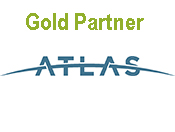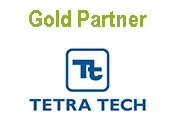|
January 2014 Newsletter
The LSPA Loss Prevention Committee's Review of FY '13 Notice of Audit Findings - Risk Assessment
By: Jane Parkin Kullmann, Risk Assessment Specialist, Haley & Aldrich, Inc
The LSPA's Loss Prevention Committee (LPC) has started reviewing MassDEP's fiscal year 2013 Notices of Audit Findings (NOAFs). This year the LPC plans to provide a short article for each category of NOAFs, with the main takeaways and observations.
The 2013 NOAFs were organized into seven categories: Notices of Activity and Use Limitations, vapor intrusion (VI)/closure, non-aqueous phase liquids, risk assessment, nature and extent, remedial systems, and downgradient property status. Risk assessment was the first category of NOAFs reviewed by the LPC. The LPC included the category of risk assessment because of the important relationship between risk-related issues, such as calculating exposure point concentrations (EPCs), and characterizing the nature and extent of contamination.
From this review, the LPC has identified the following key considerations for your next opinion supported by a risk assessment:
- Background: Yea or Nay?
Several NOAFs found insufficient evidence provided to exclude one or more metals as constituents of concern (COCs) from the risk assessment. In one case, lead was excluded as a background condition based on the presence of coal/coal ash/wood ash; however, MassDEP noted that the historical use of the site as a dump could also be a source. For another site, arsenic was excluded as background; MassDEP found this inappropriate because similarly elevated arsenic levels were not detected at other sites in the vicinity, and the former use of the site could have been a potential source. These NOAF findings demonstrate that a solid technical justification should be provided when excluding COCs from a risk assessment. MassDEP cited its Technical Update on Background Levels of Polycyclic Aromatic Hydrocarbons and Metals in Soil as a resource for evaluating background.
- Back to the Future: Risk Assessment and Vapor Intrusion.
The combination of vapor intrusion and risk assessment continues to rear its ugly head in a number of NOAFs across both 'space' (MassDEP Regions) and 'time' (date of MCP submittal). Specifically:
- In one NOAF, MassDEP indicated that certain contaminants should not have been excluded from consideration as COCs due to inadequate justification that they were not related to the release.
- Several NOAFs called out issues with how EPCs were calculated for the vapor intrusion pathway.
- With respect to evaluating exposures for current uses, MassDEP generally said that modeling was inappropriate to calculate EPCs and that direct measurements of indoor air should be obtained. For evaluating potential exposures for future residential use of a commercial building, in relation to an RAO filed in 2004, MassDEP stated that direct measurements of indoor air were inappropriate for use as EPCs and modeling should be used.
- MassDEP found limitations in data sets used to calculate EPCs for some sites, including: 1) indoor air samples not collected during winter conditions, 2) use of calculated average concentrations as EPCs rather than 95th UCLs or maximums, and 3) indoor air EPCs estimated using an average concentration of results from multiple groundwater monitoring wells.
Overall, because MassDEP continues to look closely at VI sites, it may be advisable to carefully consider using conservative approaches to evaluating this pathway.
- Think about laboratory analytical reporting limits.
More than one NOAF noted that laboratory reporting limits for analyses of environmental samples exceeded applicable standards, including reportable concentrations for soil or groundwater, Method 1 Standards, or Threshold Values for Vapor Intrusion. In such cases, it was MassDEP's view that these data were not appropriate for evaluating the effectiveness of response actions and/or assessing risk. As presented in MassDEP's REDUA guidance, it is generally desirable to achieve reporting limits below applicable standards. If you have questions about this, your laboratory can be a helpful resource to provide guidance about the feasibility of achieving certain reporting limits.
- Don't forget the critters.
In one NOAF, MassDEP listed several deficiencies relative to the evaluation of ecological risk. MassDEP stated that the number and spatial distribution of sediment samples collected from an adjacent river were not adequate to provide representative spatial distribution to support a Response Action Outcome (RAO). In addition, sediment samples were not analyzed for some of the COCs identified in soil at the site, which may have migrated into nearby sediment. While concentrations of some contaminants in sediment exceeded sediment Threshold Effects Concentrations, the RAO indicated that a Stage II Ecological Risk Assessment was not necessary, in part because the exceedances were in a small area that did not represent a "potentially significant exposure." MassDEP rejected this rationale, indicating that these values could not be screened out by citing the "Area-Based Screening for Sediment Contamination" guidance. If a site has potential environmental receptors that could be impacted by a release, one should carefully consider one's approach to sampling (number, spatial distribution, analyses), and whether a Stage II is necessary.
- Method 3 is here, have no fear!
NOAFs were issued for two sites where a Method 1 risk assessment was conducted to support a Class A RAO, but the EPCs as calculated exceeded an applicable Method 1 standardand therefore did not demonstrate No Significant Risk. In each case, MassDEP conducted its own risk assessment using Method 3 and concluded that these EPCs could be used to demonstrate NSR. Because NSR had been achieved, MassDEP did not require additional work. Further, MassDEP did not issue Notices of Noncompliance in these cases. A Method 1 approach may be more straightforward; however, an LSP should consider whether the site could benefit from a Method 3 approach.
|

































